One day Brent Nelson came to work wearing a tacky Christmas sweater and carrying his guitar.
Two things were weird about that setup: Nelson was teaching a first-year engineering class, and it was nowhere near December.
That’s just how the day may go for Nelson, an associate professor of mechanical engineering at Northern Arizona University who brings his personality and love of explaining into the classroom every day. He used his guitar to talk about sound wavelengths, musical signature and acoustics and how all of that relates to engineering. Other times he talks about cooking to demonstrate engineering principles of heat transfer.
Nelson talks to his students about life, priorities, study habits and how to find success in various fields and, perhaps more importantly, outside of work.
“I like being able to connect with students and talk to them about not just engineering but life—who they’re going to be as professionals, as citizens and how what they’re doing relates to broader impacts,” Nelson said. “I really like being able to talk about larger scale impacts of the work they’re doing and where they fit into that.”
Creating the next generation of scientists and engineers
Graduate school for Nelson had him running between science and engineering, incorporating both into his research. He liked being the science-focused engineer, but didn’t want the entirety of his career to be spent in a lab. When he arrived in Flagstaff he wanted teaching to be his focus.
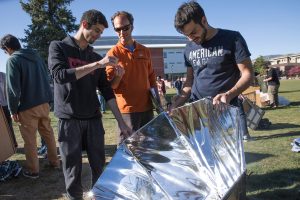
“I like explaining things in general,” he said. “I’m an overexplainer in life. It’s good to have an excuse to be an overexplainer.”
Nelson also likes the relational aspect of being a professor. He works with individuals, reaching out to some who may be struggling or not reaching their full potential. Maryrose Bisagna Smith was one of those. She was having second thoughts about her mechanical engineering major as she went to job fair after job fair and found nothing aligning with her interests.
“When I was looking particularly distraught after one such fair, Brent saw me in the hall and asked how it went,” she said. “He encouraged me to stay in the program, noting mechanical engineering is usable in almost every field.”
Audrey Ford is another. Now in her third year of a doctorate in mechanical engineering at University of California, Berkeley, Ford approached Nelson about research opportunities when she was a biology student taking his thermodynamics class. Doing cross-disciplinary research with Nelson and biology professor Rob Kellar showed her the opportunities mechanical engineering presented, and she added it as a major. That led to her interest in biomedical engineering, which led to an internship and then a job at W.L. Gore & Associates.
Nelson also was the first person to float the idea of graduate school to Ford.
“That wasn’t something I was considering,” she said. “He was instrumental in making sure I was looking into grad school. I don’t think I would have thought about it as much otherwise.”
Nelson even, five years later, wrote Ford a letter of recommendation for the Whitaker Fellowship, which will pay for Ford to spend a year in Italy doing research.
And there were and continue to be more students. As Nelson reflected on the awards and recognitions he’s
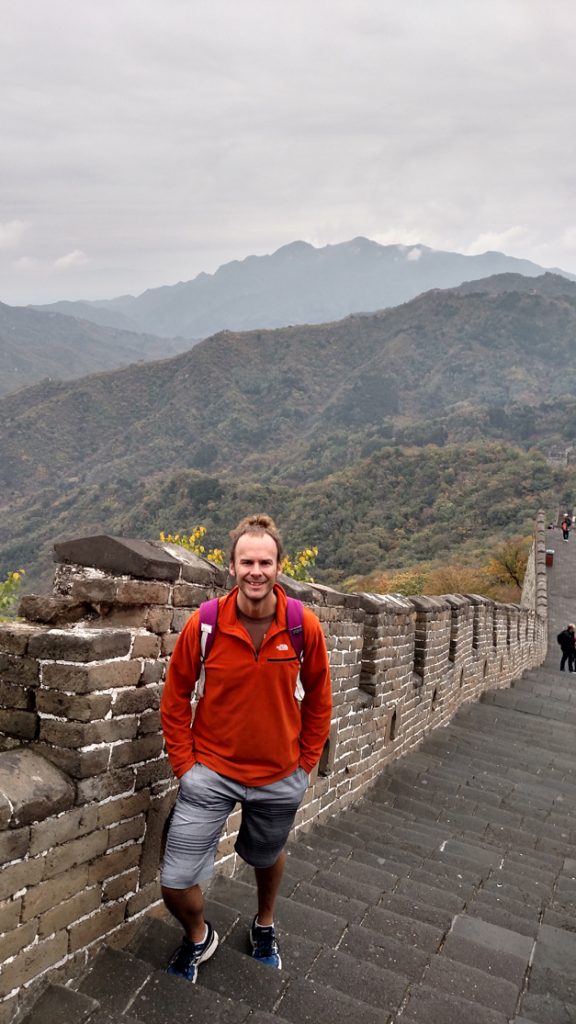
received during his time as a professor, he waves his hand at the numerous certificates pinned to the bulletin board behind his desk. Each is from a Gold Axe Award winner who named him as their most influential professor.
He is perhaps not a traditional professor. Perhaps this is why he’s so effective. There are the sweaters, the unusual methods of teaching, the occasional running into former students downtown on Friday nights and having said former students proclaim how hard yet great his class was. He comes at his methods of teaching from two places.
First, he wants students to want to be there, enjoy learning and be able to apply what they learn.
“One of the things I try to do is connect what they’re doing with what they have physical, tangible experience with,” he said.
That matters, Bisagna Smith said, because too often these concepts get written off as boring and unrelatable by college students.
“Science is interesting, and it should be presented as such to future generations,” she said. “While there were silly things just to get us through the semester, he also showed us the relationship of what we were learning to the world around us. Engineering is a physical concept, present everywhere. Brent brought that into the classroom, letting us build, see and do. This type of engagement is what propels future scientists.”
Second, Nelson tries to meet students where they are—young, living on their own for the first time, enjoying social life and not always interested in spending their evenings with a textbook.
“I tell my students all the time how I was a terrible student and I had terrible habits,” he said. “I didn’t realize the difference between how much you learn as a good student and a bad student until I was in grad school. It was the first time I went to class every day and took good notes.”
To meet them there, he does funny things like the tacky sweaters and a slideshow about the evolution of the Nelson beard. He uses memes in class, he uses slang, he chats with the students. He also holds them accountable, letting students know if they don’t want to come to class, don’t, but realize there are consequences.
“I want our university to produce students who have learned to take responsibility for their own decisions,” he said.
The rabbit hole of energy research
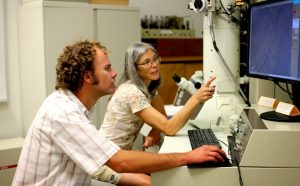
Nelson is an engineer, but he thinks kind of like a scientist. He’s found a niche as an engineering
consultant for other researchers who ask science questions but have engineering methods.
“What was really fun to me was to sit down with biologists and chemists and physicists and find opportunities for us to be able to do more than we could on our own,” he said.
When he came to NAU, this led him to working with Kiisa Nishikawa, director of the Center for Bioengineering Innovation (CBI), who researches how to use natural muscle physiology to create better prosthetic limbs, and Kellar, associate professor of practice with the CBI, who does research on materials for regenerative medicine.
His other research area centers around energy systems analysis, taking a big-picture look at energy policies and technologies and how they affect national energy usage and cost.
This research led to working for the U.S. Department of Energy from 2014-2016. The short description of Nelson’s time in Washington, D.C., is he worked on building technologies, focusing on research and development strategy for technology like energy-efficient lighting and heating and cooling systems. He checked out technologies to gauge their potential and advise on whether they were worth consideration.
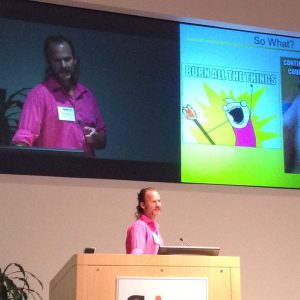
The long answer is much longer and much more interesting. Energy has always been more complicated than burning coal or flipping a light switch, with a complex equation, varying needs and constantly fluctuating costs behind that switch. Electricity markets aren’t simply supply and demand, since demand constantly fluctuates based on how many people are running air conditioners, drying clothes or plugging in amps. Supply constantly adjusts to meet the consumer demand, causing plants burning coal and natural gas to adjust their output, leading to electricity costs that change minute-by-minute.
On top of that, he took into account renewable sources, which don’t produce energy predictably.
“If you look at solar and wind, the wind blows when it blows and the sun is up when it’s up and you can’t really ramp them up and ramp them down, other than throwing energy away,” he said.
That introduces the question of energy storage and how the United States can effectively store energy produced through solar panels on a sunny day or by a coal plant that’s only open a few months out of the year.
All of this is the backdrop behind a fundamental misunderstanding of what Americans pay for when they pay their electric bills. It’s not just the electricity used, Nelson said; it’s also paying to have the ability to use electricity at any time regardless of supply or demand in that moment.
And that’s just addressing the mechanics of the system. There’s a host of other issues related to explaining new ways to sell, use, conserve and store electricity for the American public.
So yeah, it’s complicated. And also pretty great.
“Working in that space was really interesting because I got to learn a lot about electricity economics in particular and how policy interfaces with that and how efficiency interfaces with that,” Nelson said. “I researched where technology is going both in terms of renewable energy and the Internet of things and how that might impact what loads can be scheduled and how that’s going to play in with bidding into electricity market and current electricity markets and three-years-ahead electricity markets. It’s this super complex thing, and I went deep down into that rabbit hole and I learned a lot and it was really fun.”
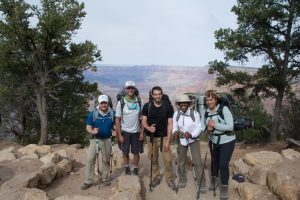
Life lessons
Bisagna Smith is a researcher for Gore, designing and executing studies that verify the safety and effectiveness of endovascular stent grafts. She frequently finds herself facing difficult technical challenges that don’t have an obvious solution. As she looks for one, she goes to one moment.
“Brent once used the term ‘home-grown research’ in one of his lectures. He was describing a paper where the team used everyday tools to analyze the viscosity of a certain substance,” Bisagna Smith said. “In the tech field we often look for the newest, shiniest piece of equipment, but he presented this very simple design as the newest, shiniest thing and that’s stuck with me.
“Whenever I face a problem at work, I remember that and I ask myself, ‘Is there a simpler solution staring me in the face? Do I already have the tools I need?’”
That also could be a reason for using a guitar in his first-year engineering class. Nelson keeps it in his office for when he needs a break. In college, looking for ways to avoid studying for finals, he picked up a guitar and has been playing since, though he’s not great, he said. He doesn’t play to get better, he plays to relax.
Nelson also hits the outdoors to relax, hiking, skiing, snowboarding and backpacking. He occasionally brings
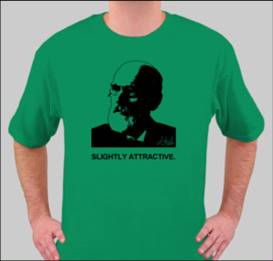
up outdoor activities in class to explain heat transfer, which occasionally morphs into a discussion about when to wear a wicking layer. (When it’s cold.)
“Inner basin in the fall,” he said without hesitation about his favorite trail. “Or the Grand Canyon. The canyon’s just great always.”
The Christmas sweaters also aren’t his only fashion statement. In graduate school Nelson was part of a group of graduate students focusing on difficult science and engineering questions who found an outlet in creating goofy T-shirts with inside jokes only other scientists and engineers would get, including a spoof on Brownian motion and a joke about Lord Van Der Waals.
“That’s a good one,” he said with a laugh. “Most people think it’s Freud and some reference to something Freudian.”
They’ve sold about five T-shirts beyond their initial batches for grad school friends. But it’s a way to enjoy
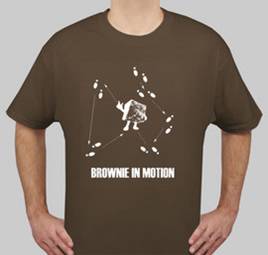
science and engineering, be it in class, doing research or tackling homework.
“When a student comes out of a class and is excited about the subject and is excited about their future in the profession, that’s a really satisfying feeling.”



